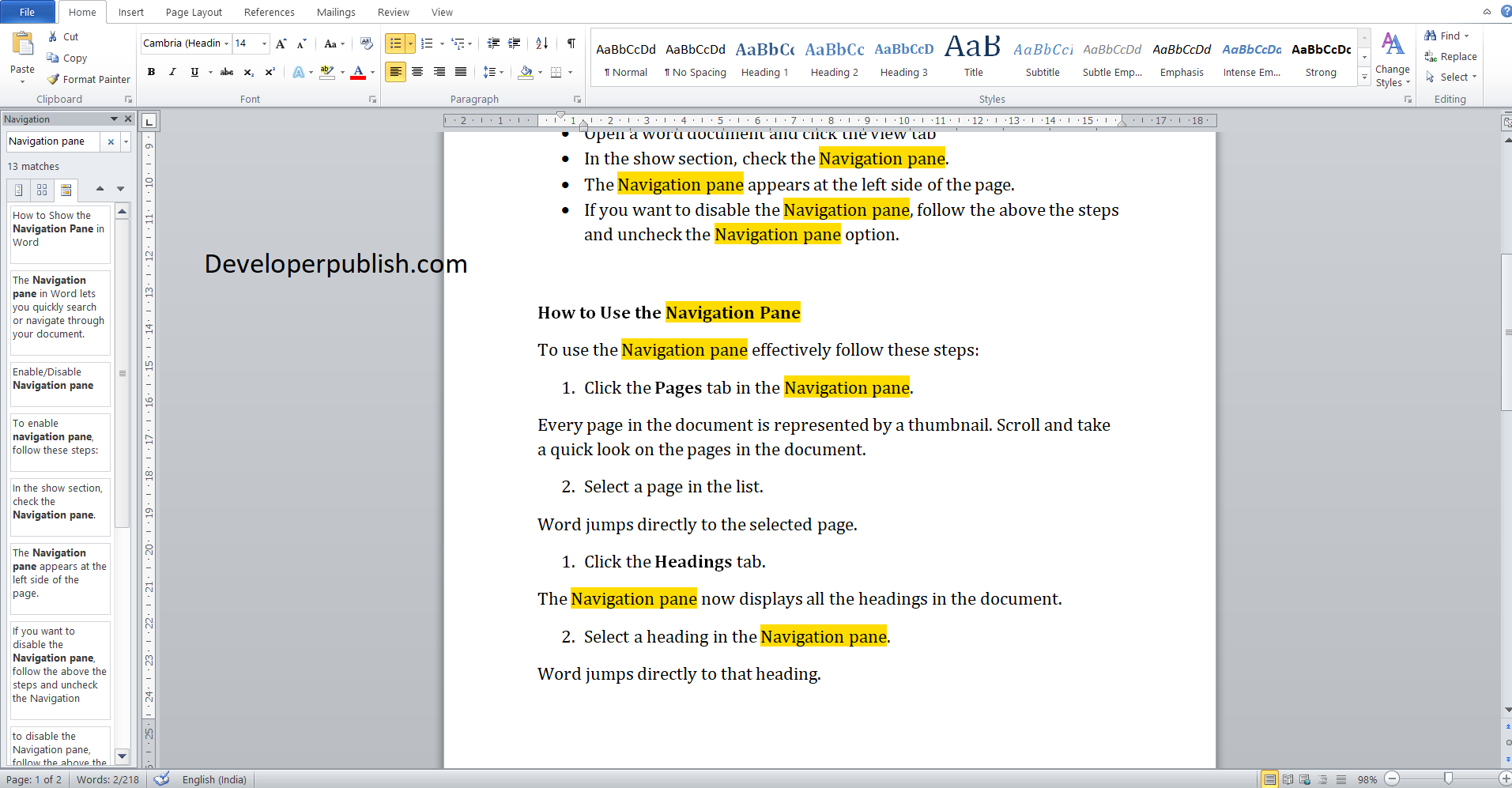
If you want to filter the pages in large documents based on particular image or content then this tab is useful as you can use the search box to find objects and only those pages that match that particular object are shown. The functionality is similar to the thumbnail pane in earlier versions of Word. In the page view all the pages in the document are displayed as thumbnail images. The old Document Map could fit more headings on the screen while the Navigation pane looks nicer for demonstrations but doesn’t show as much information to users. In one way the new Navigation pane is a step back in design. This view is an expanded version of the ‘Document Map’ view that’s been in Word for many versions (View | Document Map). There is also a shortcut Ctrl + drag to drag and make a copy of the required headings along with the content. But you can use the default Ctrl + C and Ctrl + V to copy and paste.

You can choose desired section and it’s content to print as well.Īlthough there is option to select desired heading and content there is no shown option to copy and paste it. Warning: when you select to delete any heading then all the content including all the subheadings under that particular heading is deleted. Note that Word is changing the Heading style which is linked to the outline level – not the outline level alone.Īlso you can add new headings or subheadings. For example you can promote a heading from Heading 3 to Heading 2 or demote it to Heading 4. If you want to make sure it is always displayed for your documents, you'll appreciate the ideas in this tip. As shown in the below screenshot you can promote or demote heading levels by simply clicking on the respective button. The Navigation pane can be a big help in moving around a document. To display this menu right click on any of the heading in the navigation pane. There are also other options to work with the headings. When you do this the heading and the entire block of text between that heading and the following heading is moved to where you place it. You can drag and place the headers in different positions if you wish to change the structure of the document. By clicking the left arrow button beside the Heading title you can collapse or expand the headings list. This makes it easier to navigate through huge document containing many pages. When you restart Excel, the Task pane should remain visibile.On whichever heading you click in the navigation pane corresponding page is displayed in the document.

#Navigation task pane in word code#
This code is designed to run automatically when the file is opened, and it displays the Task pane:Īpplication.CommandBars("Task Pane").Visible = True The second solution, then, is to add more programming code to the file being opened automatically (for instance, Personal.xls). For many people, this may not be a practical solution-after all, Personal.xls is often used for "global" user macros and customizations. The first is to make sure that nothing automatically loads when Excel starts. There are three ways around this problem. It appears that this behavior-despite what you explicitly specify for the Task pane to do-is built into Excel. For instance, if you have any worksheets in your Startup folder, or if you have a personal.xls file that loads, then the Task pane will automatically be obscured.

Excel automatically hides the Task pane upon startup if your copy of Excel loads any files automatically.

This happens in spite of the fact that he has the Task pane set to show at start-up (Tools | Options | View tab), and the same selection is chosen at the bottom of the Task pane itself.Įven though Brian is using Excel 2002, the problem he experienced could also occur for those using Excel 2003. Brian was perplexed by the fact that when he starts Excel 2002, the Task pane momentarily appears and is then overlaid by the standard blank workbook.


 0 kommentar(er)
0 kommentar(er)
